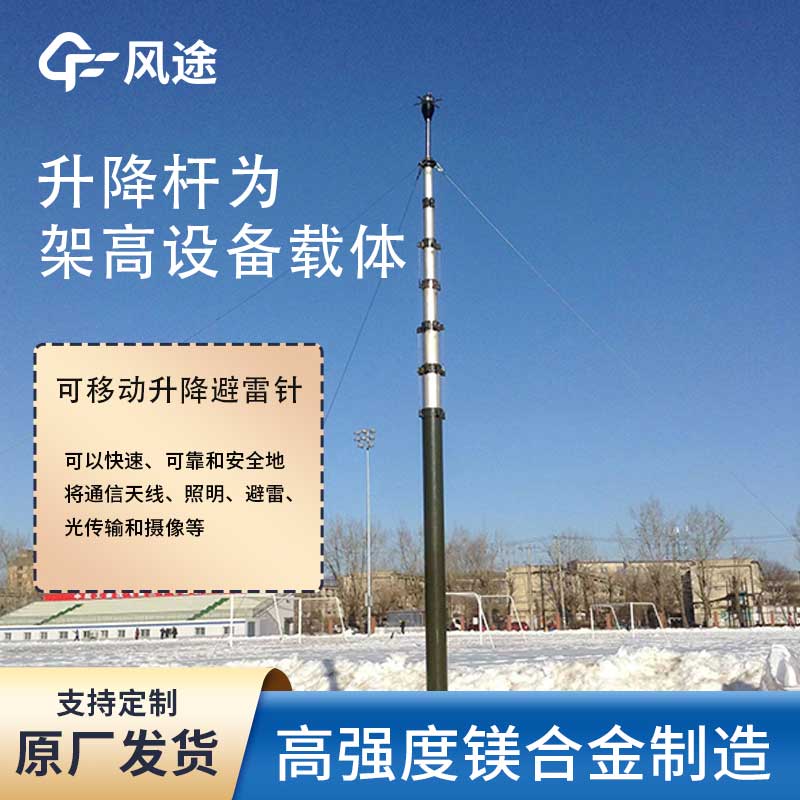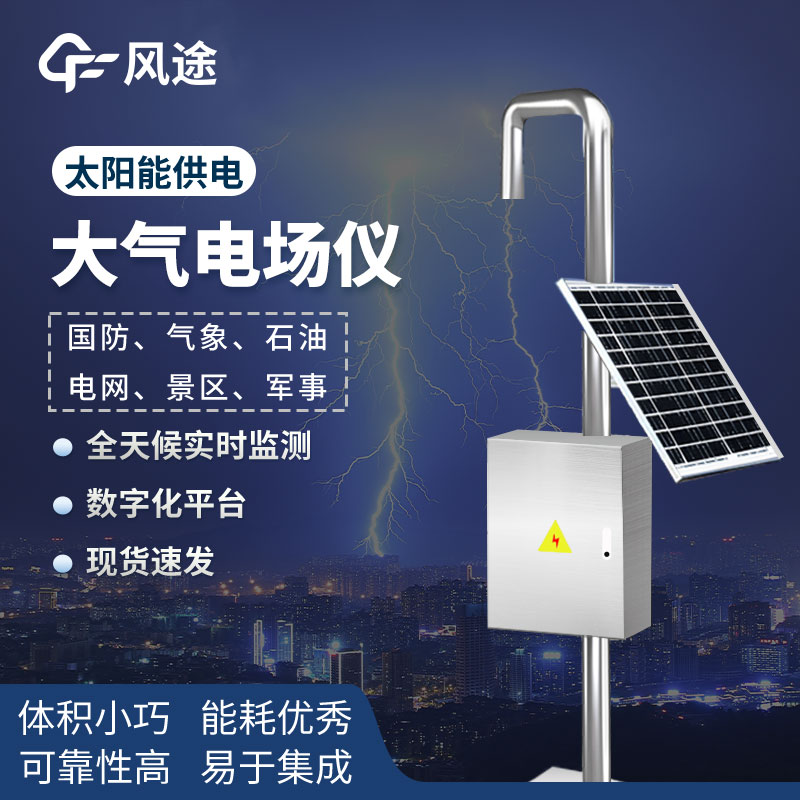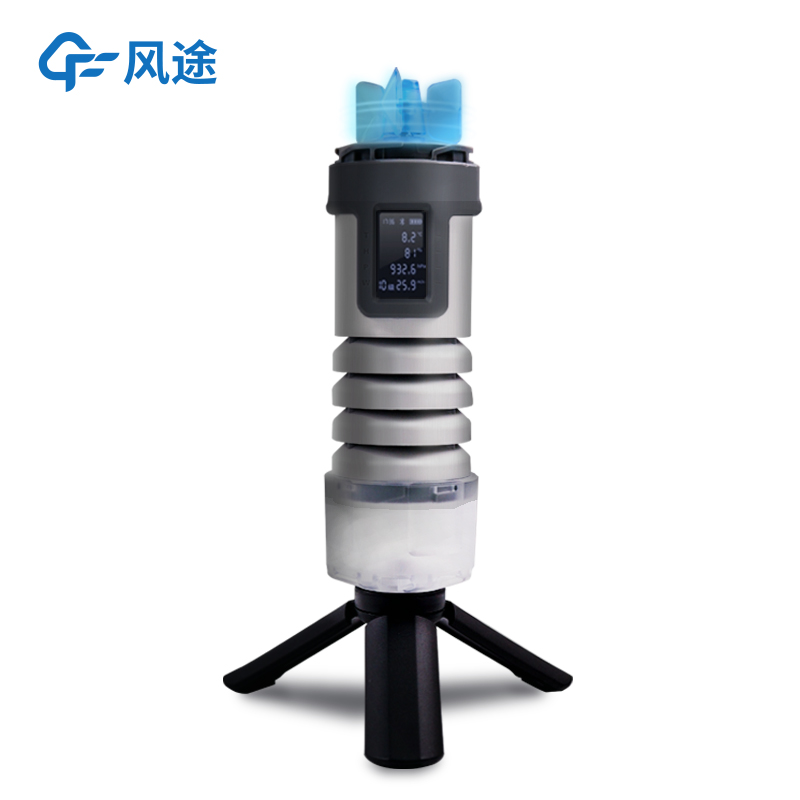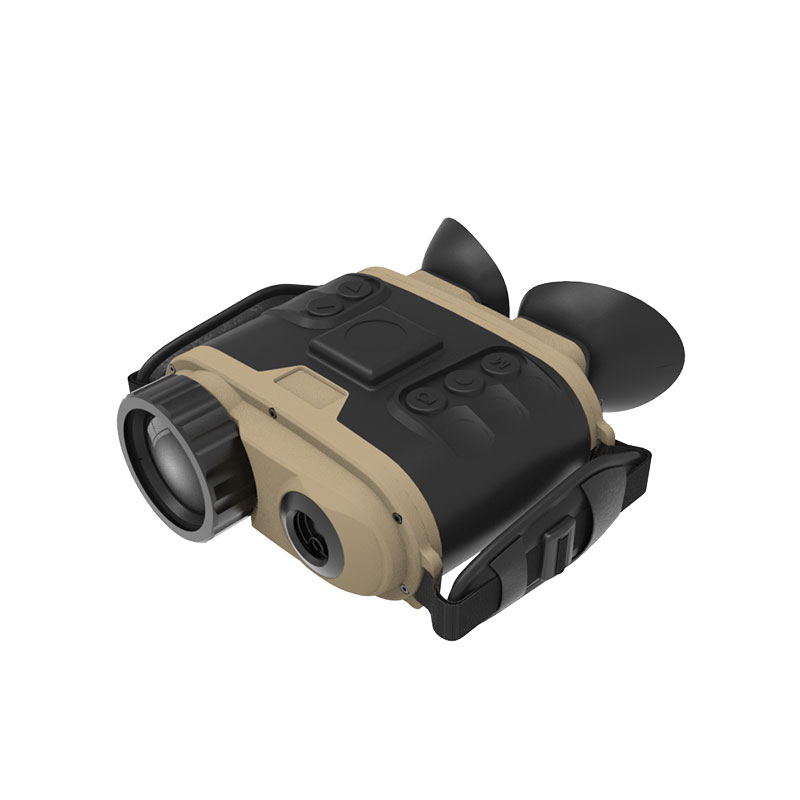Product
Recommended article
- One - Stop Dust Monitoring Solution
- How Forestry Weather Stations Bolster Forest Fire Prevention Efforts
- Discover the Power of Negative Oxygen Ion Monitoring System for Cleaner Air
- Comparative Analysis of Ultrasonic and Automatic Weather Stations in Meteorological Monitoring
- Breaking Through the ‘Last Meter’ with Online Dust Monitoring System
- Mastering Road Conditions with Road Weather Station
Contact us
Shandong Fengtu IOT Technology Co., Ltd
Sales Manager:Ms. Emily Wang
Cel,Whatsapp,Wechat:+86 15898932201
Email:info@fengtutec.com
Add:No. 155 Optoelectronic Industry Accelerator, Gaoxin District, Weifang, Shandong, China

TVOC Online Monitoring System
Model:FT-ZV1
Brand:fengtu
Related products
1.TVOC Online Monitoring System Product Introduction
TVOC Online Monitoring System is suitable for online monitoring of volatile organic compounds in factory boundaries and unorganized, and can also monitor PM10 and PM2.5 in atmospheric environment.The TVOC Online Monitoring System uses a light scattering rapid dust detector with laser as the light source. The measurement principle is: when light shines on particles suspended in the air, scattered light is generated. Under the condition of certain properties of the particles, the intensity of the scattered light of the particles is proportional to their mass concentration. By measuring the intensity of scattered light and applying the mass concentration K value, the mass concentration of the particles can be obtained.
The instrument can monitor (PM10, PM2.5) at the same time. It is a new type of dust measuring instrument with functions such as temperature and humidity compensation and automatic instrument calibration. It can effectively reduce the impact of temperature and humidity on the measured values, improve the measurement accuracy in high humidity climate environments, and can continuously monitor particulate matter in the air online.
It has dust sampling air intake and air outlet functions, and is equipped with a filter barrel device to protect the service life of the vacuum pump and increase the overall service life of the instrument. It can continuously monitor in a high temperature environment, can work stably and reliably in a high temperature environment at the installation site, and can work 7x24 hours uninterruptedly.
2. TVOC Online Monitoring System Sensor Technical Parameters
1. Air temperature, humidity and air pressure sensors:
1.1 Basic Principles
This series of products uses a highly integrated temperature and humidity sensor chip with digital output calibrated over the entire measurement range. It uses patented CMOSens technology to ensure that the product has extremely high reliability and excellent long-term stability. The sensor includes a capacitive polymer humidity sensitive element and a temperature sensitive element made of energy gap material. These two sensitive elements are designed on the same chip with a 14-bit A/D converter and a serial interface circuit.
1.2 Basic parameters
Air temperature: Measurement range: -40℃-60℃ Resolution: 0.1℃ Measurement accuracy: ±3%
Air humidity: Measurement range: 0-100% Resolution: 0.1% Measurement accuracy: ±3%
Atmospheric pressure: Measurement range: 300~1100hpa Resolution: 0.1hpa Measurement accuracy: ±1hpa
2. Wind speed sensor
2.1 Features
The wind speed sensor is a professional meteorological instrument used to measure the horizontal speed of the wind. It adopts the traditional three-cup wind speed sensor structure. The wind cup is made of ABS material with high strength. At the same time, it is equipped with a smooth internal bearing system and starts well, ensuring the accuracy of information collection. The built-in signal processing unit in the cup can output the corresponding wind speed signal according to user needs. It can be widely used in meteorology, ocean, environment, airports, ports, laboratories, industry, agriculture and transportation.
2.2 Technical parameters
Measuring range: 0-32.4m/s Accuracy: ±0.3m/s Starting wind speed: 0.2-0.4 m/s
Supply voltage: 7-24v DC
Output signal: 4-20mA
Wind speed value = (output voltage - 0.4) / 1.6 * 32.4
2.3 Dimensions and installation instructions
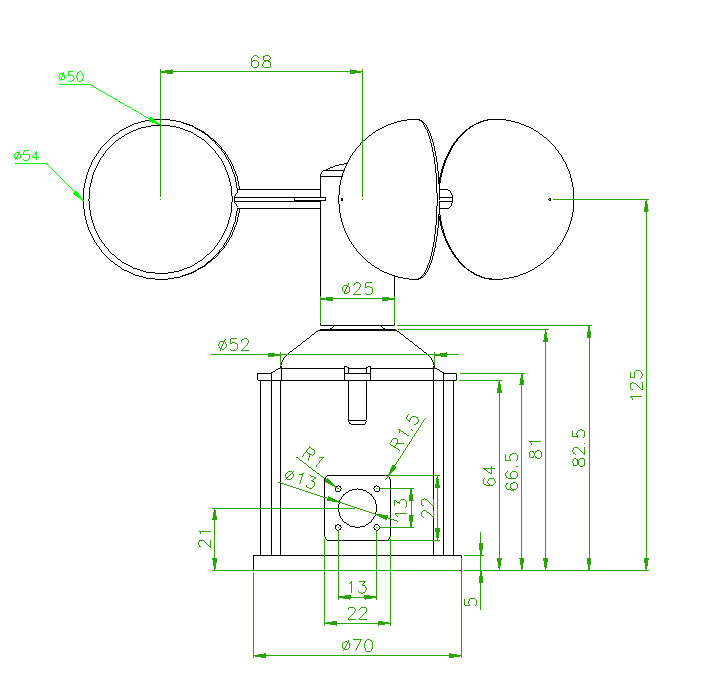
2.4 Fixing method
The flange installation method is adopted. The threaded flange connection makes the lower pipe of the wind speed sensor firmly fixed on the flange plate. The chassis is Φ70mm. Four mounting holes of Φ5mm are opened on the circumference of Φ61mm. It is tightly fixed on the bracket with bolts to keep the whole set of instruments at the best level to ensure the accuracy of wind speed data. The flange connection is easy to use and can withstand greater pressure.
3. Wind direction sensor
3.1 Features
The wind direction sensor is a professional meteorological instrument used to measure the horizontal wind direction. It uses a Hall angle sensor inside and uses a low-inertia light metal wind vane to respond to the wind direction. When the wind direction changes, the tail rotates through the shaft to drive the shaft core magnet to rotate, thereby outputting a changing voltage signal. It can measure the natural wind direction of 0-360 degrees starting from the tag north. It has a high cost-effectiveness and can be widely used in meteorology, ocean, environment, airports, ports, laboratories, industry, agriculture and transportation.
3.2 Technical parameters
Measuring range: 0-360 degrees: (0.4V, or 4MA corresponds to 0 degrees, the direction of north)
Accuracy: ±1°
Starting wind speed: 0.3m/s
Supply voltage: 7-24v DC
Output signal: 4-20mA
Wind direction value = (output voltage - 0.4) / 1.6 * 360
3.3 Appearance and structure
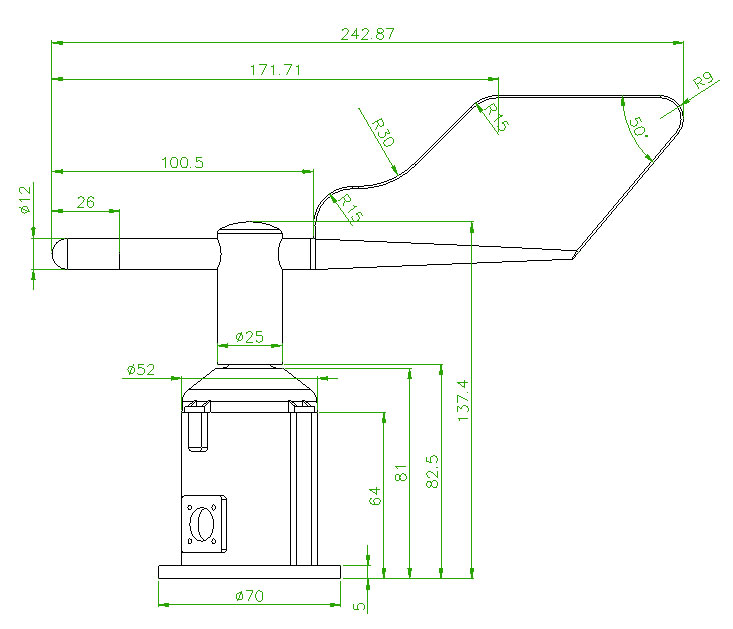
3.4 Fixing method
The flange installation method is adopted. The threaded flange connection makes the lower pipe of the wind direction sensor firmly fixed on the flange plate. The chassis is Φ70mm. Four mounting holes of Φ5mm each are opened on the circumference of Φ61mm. It is tightly fixed on the bracket with bolts to keep the whole set of instruments at the best level and ensure the accuracy of wind direction data. The flange connection is easy to use and can withstand greater pressure.
Note: During installation and debugging, please make sure the arrow on the column is aligned with the actual north (a compass can be used for assistance). A white label with a black arrow is attached to the black wind direction sensor.
4. Pump-type PM2.5 and PM10 sensors:
Power supply voltage: DC12V
Maximum power consumption: (current 2.5A) about 30W
Output mode: RS485 (Modbus)
Monitoring principle: Laser scattering
Dehumidification principle: heating dehumidification
Air pump flow: 2L/min
Dimensions: 230x175x90 (length, width and height)
Weight: about 1.85kg (without filter element)
Monitoring indicators:
PM2.5 measurement range: 0-999ug/m³ Resolution: 1ug/m³ Measurement error: ±10%
PM10 measurement range: 0-1999ug/m³ Resolution: 1ug/m³ Measurement error: ±10%
TSP measurement range: 0-4999ug/m³ Resolution: 1ug/m³ Measurement error: ±10%.
Noise measurement range: 40db~130db Resolution: 0.5db Measurement error: ±5% Frequency range: 10-20KHz;
5. TVOC sensor
5.1 Technical parameters
Detection range: 0-5PPM Resolution 0.01PPM Accuracy <±2%
6. LED:
Conventional configuration, outdoor P8 monochrome LED single line display
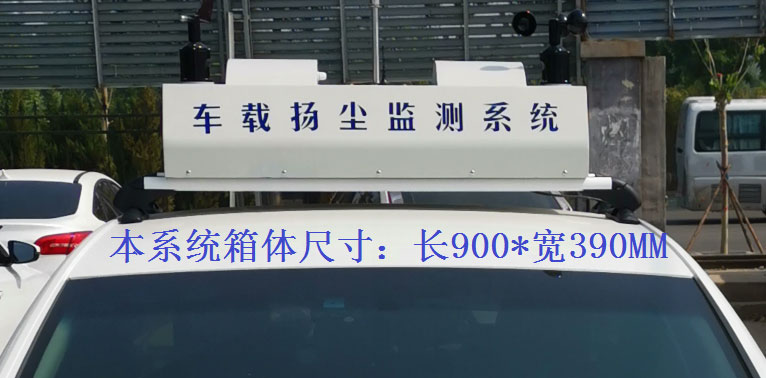
7. Collector parameters:
The data collector uses contemporary microelectronic technology to record, store and display the sensor data in operation. It has the characteristics of reliable operation, simple operation, easy data collection and computer analysis. The collector can store the collected data directly into a common USB flash drive. After the data collection is completed, the user can directly insert the USB flash drive into the collector to extract the data.
Power supply: DC12V/DC
Sensor communication: RS485 Modbus protocol
Network data: GPRS transmission
Internal clock: Manual time adjustment
Data storage: automatic, maximum 160,000 records
Storage interval: 60-65535, configurable. Unit: seconds
RS485 interface: DB9 pin
Data export: USB port, 485 port to connect to computer, website download
Related article
-
Forest fire weather station FT-SL10 helps mountainous areas to better cope with fires
2024-03-14 -
Pavement Condition Detectors: Advantages of Laser Remote Sensing Technology
2024-07-19 -
Advanced Road Weather Station for Traffic Safety
2024-08-27 -
Fengtu Automated Weather Monitoring for the Modern Farm
2024-08-13 -
How to choose a dust and noise monitor?
2024-07-16 -
Local Air Quality Soars as Dust detector Drives Effective Pollution Control
2024-12-06 -
The Intimate Link between Negative Oxygen Ion Monitors and Forest Tourism Resources
2024-11-08 -
ntroduction to the Forest Fire Monitoring System
2024-05-23


 Get a Free Quote
Get a Free Quote